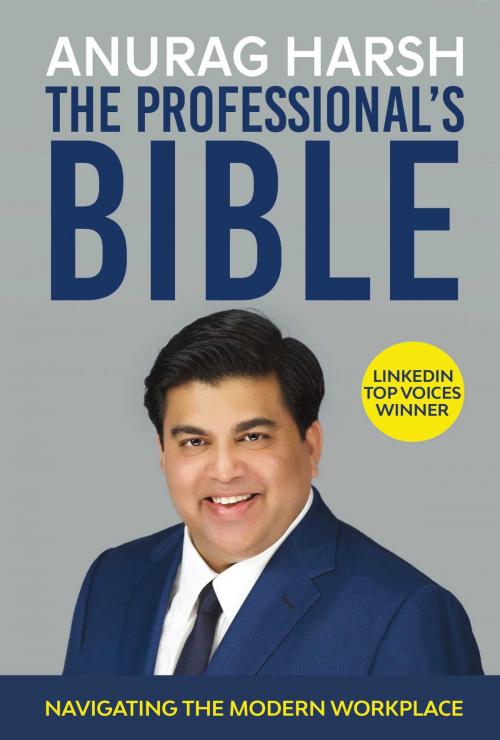The Professional’s Bible
Navigating the Modern Workplace
Business & Finance, Career Planning & Job Hunting, Careers| Author: | Anurag Harsh | ISBN: | 9781483598048 |
| Publisher: | BookBaby | Publication: | April 24, 2017 |
| Imprint: | BookBaby | Language: | English |
| Author: | Anurag Harsh |
| ISBN: | 9781483598048 |
| Publisher: | BookBaby |
| Publication: | April 24, 2017 |
| Imprint: | BookBaby |
| Language: | English |
The modern workplace is recognizably different from the workplace of just 20 years ago. From the tools, the culture, and the demands to the career aspirations, leadership styles and employee expectations, the landscape is an Oz of surprises and transformation. For those born in the midst of digital transformation, the changes are part and parcel of learning how to succeed in today’s market. For those taken by storm, the turning tide signals a commensurately radical shift in the way business has been done for, well, a very long time. Some things haven’t changed though. People are people. Today’s workers are no different from the workers of a few decades ago in crucial senses. Workers today want to better themselves, make money, support their families and make time to enjoy them. They want healthy work relationships and once, in a while, their hard work lauded. In essence, at the personal level, the gap between then and now is not so vast. At the business level though, it’s a whole new world. A single company can have employees in different time zones, with expansive technological infrastructure supporting productivity and requiring new skills and expertise. That same company probably uses automation, AI, machine learning and robotics to offer new products, respond to market changes faster, and maintain highly coordinated supply chain segments operating in synchronicity. All the while, employees expect diversity, upward mobility, sustainable work relationships, job fulfillment, and furthering education. All of this in the context of a disruptive market terrain where competition is ruthless, and global. For those legacy workers who came of age just 50 years ago, the modern workplace presents a tremendous challenge. They must constantly reevaluate their leadership style, develop genuine relationships with co-workers, be better salespeople, and learn how to market themselves, be innovative and entrepreneurial, achieve lofty project goals and maintain company priorities. They must learn new technology, new methods, and new business models, constantly reinventing themselves to remain relevant. Frankly, it’s a lot. The Professional’s Bible is a simple guide to help people understand, navigate, and thrive in the modern workplace and answer the big question: What does it take to succeed in today’s job market? At the heart of that question lies great uncertainty. This book is meant to quell that uncertainty. The book takes the reader on a journey of short essays on Leadership, Self-Improvement, Career Development, Sales, Marketing, Innovation and Entrepreneurship. By the end, you should have the essential knowledge necessary to understand and master the modern workplace.
The modern workplace is recognizably different from the workplace of just 20 years ago. From the tools, the culture, and the demands to the career aspirations, leadership styles and employee expectations, the landscape is an Oz of surprises and transformation. For those born in the midst of digital transformation, the changes are part and parcel of learning how to succeed in today’s market. For those taken by storm, the turning tide signals a commensurately radical shift in the way business has been done for, well, a very long time. Some things haven’t changed though. People are people. Today’s workers are no different from the workers of a few decades ago in crucial senses. Workers today want to better themselves, make money, support their families and make time to enjoy them. They want healthy work relationships and once, in a while, their hard work lauded. In essence, at the personal level, the gap between then and now is not so vast. At the business level though, it’s a whole new world. A single company can have employees in different time zones, with expansive technological infrastructure supporting productivity and requiring new skills and expertise. That same company probably uses automation, AI, machine learning and robotics to offer new products, respond to market changes faster, and maintain highly coordinated supply chain segments operating in synchronicity. All the while, employees expect diversity, upward mobility, sustainable work relationships, job fulfillment, and furthering education. All of this in the context of a disruptive market terrain where competition is ruthless, and global. For those legacy workers who came of age just 50 years ago, the modern workplace presents a tremendous challenge. They must constantly reevaluate their leadership style, develop genuine relationships with co-workers, be better salespeople, and learn how to market themselves, be innovative and entrepreneurial, achieve lofty project goals and maintain company priorities. They must learn new technology, new methods, and new business models, constantly reinventing themselves to remain relevant. Frankly, it’s a lot. The Professional’s Bible is a simple guide to help people understand, navigate, and thrive in the modern workplace and answer the big question: What does it take to succeed in today’s job market? At the heart of that question lies great uncertainty. This book is meant to quell that uncertainty. The book takes the reader on a journey of short essays on Leadership, Self-Improvement, Career Development, Sales, Marketing, Innovation and Entrepreneurship. By the end, you should have the essential knowledge necessary to understand and master the modern workplace.















